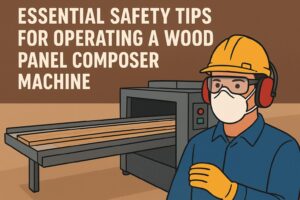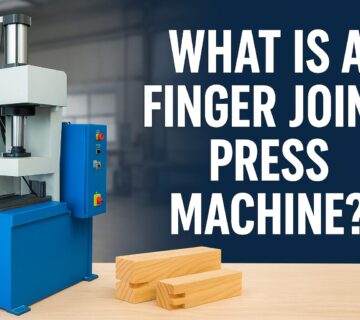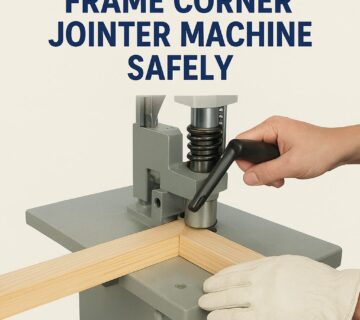Woodworking is a craft that combines skill, technology, and precision. In today’s plywood and furniture industry, machines like the Wood Panel Composer play a vital role in efficiently joining smaller wood pieces into larger panels. While these machines boost productivity and reduce wastage, it’s equally important to remember that they involve heavy moving parts, sharp tools, and high-powered operations. Safety should always come first.
In this blog, we’ll cover the essential safety tips every operator, workshop owner, or manufacturing unit should follow while using a wood panel composer machine.

1. Wear Proper Safety Gear
Before starting the machine, ensure you are wearing the right Personal Protective Equipment (PPE):
Safety goggles to protect eyes from dust and wood chips.
Ear protection like earmuffs or plugs to reduce noise exposure.
Dust masks or respirators to avoid inhaling sawdust and fine particles.
Non-slip gloves for handling wooden boards safely.
Steel-toe safety shoes to protect your feet from falling panels or tools.
Proper gear is the first defense line against potential accidents.
2. Conduct a Pre-Operation Check
Never switch on the composer machine blindly. Always:
Inspect the electrical wiring and switches for damages.
Check if safety guards and shields are in place.
Ensure all emergency stop buttons are functional.
Confirm that the work area is clean and free from clutter, oil, or dust buildup.
A quick 5-minute check can prevent major mishaps.
3. Follow Manufacturer’s Guidelines
Each wood panel composer machine may vary in design, speed, and capacity. Always:
Read the user manual carefully.
Operate within the recommended load limits.
Use only the compatible materials specified by the manufacturer.
Avoid bypassing safety features or modifying machine settings without authorization.
4. Secure and Align Panels Properly
Improperly placed wooden strips or boards can slip out and cause accidents. Always:
Align the wood correctly before feeding into the machine.
Use clamping systems when available to prevent shifting.
Avoid using warped or defective wood pieces that may jam the machine.
Correct placement ensures better quality panels and prevents accidents.
5. Stay Alert During Operation
When the machine is running:
Keep your hands and clothing away from moving parts.
Never leave the machine unattended.
Avoid distractions like using a phone or talking unnecessarily while operating.
Watch for unusual sounds, vibrations, or overheating.
Your focus is the key to safe operation.
6. Use Proper Lifting Techniques
Wood panel composers handle large boards that can be heavy. Ensure safe material handling by:
Lifting with your legs, not your back.
Using trolleys, forklifts, or extra manpower when required.
Storing panels securely to prevent accidental falls.
This prevents not just machine damage but also injuries to operators.
7. Regular Maintenance and Cleaning
A poorly maintained machine is a safety hazard. Follow a strict schedule for:
Lubrication of moving parts.
Cleaning dust and wood chips from the machine bed.
Tightening bolts and screws that may loosen due to vibration.
Replacing worn-out components like rollers or cutters.
Preventive maintenance ensures smooth and safe operation.
8. Emergency Preparedness
No matter how careful you are, emergencies may occur. Be ready:
Train operators on how to use emergency stop functions.
Keep a first aid kit nearby.
Install fire extinguishers in the workshop.
Have clear evacuation pathways and safety drills for employees.
Being prepared minimizes risks during unexpected incidents.
9. Limit Access to Trained Operators
Not everyone should operate a wood panel composer machine.
Allow only trained and certified staff to use it.
Keep untrained workers, visitors, and children away.
Supervise new operators until they gain enough experience.
This reduces human error, which is one of the leading causes of workplace accidents.
10. Switch Off After Use
Once work is completed:
Turn off the machine and disconnect power supply.
Clean the working area.
Store tools and materials safely.
Leaving the machine running or unattended can be dangerous for others in the workshop.

